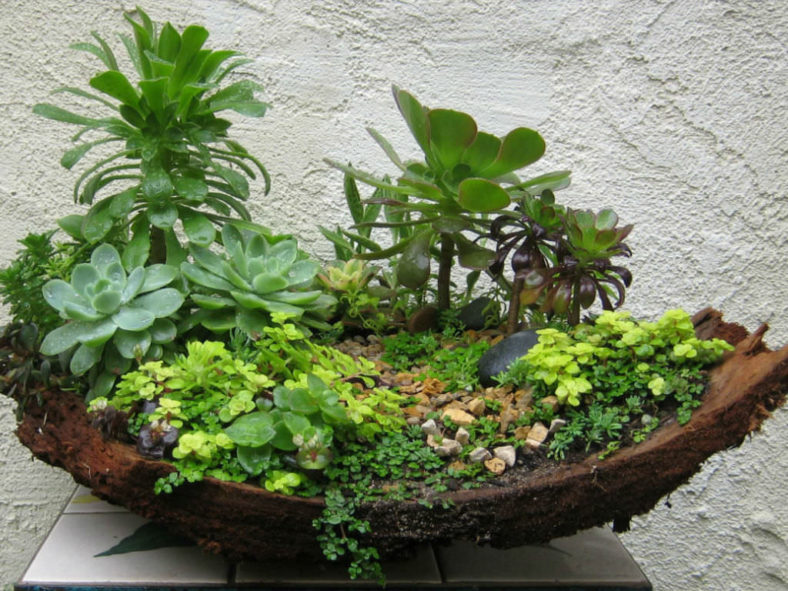Succulents feature plump, fleshy leaves and stems that retain moisture. Many succulents also produce attractive flowers in season that can brighten up a small dish garden. These plants thrive in containers because they require minimal watering or maintenance, and many also grow slowly, so they rarely need repotting.
However, if the arrangement begins to outgrow its pot, you can transfer the plants to a larger container at any time of year. Taking the time to repot properly ensures the continued health of the plant and allows you to retain the aesthetics of the original arrangement.

- Fill the new container with a soil mixture formulated for succulents, or create your own mix by mixing equal parts potting soil and coarse sand or perlite. Use a shallow pot, 2 inches (5 cm) wider than the width of the entire succulent arrangement, with at least one bottom drainage hole.
- Water the potting mixture until it is barely moist, and the excess begins to drip from the drainage hole.
- Scoop the succulents out of the old pot using the tip of a trowel or a large spoon. Lift the entire root system, not cutting or breaking the smaller roots.
- Arrange the succulents as desired in the new pot, spacing the plants 2 to 3 inches (5 to 7.5 cm) apart in all directions. Make a small hole in the mix for each plant's roots once you are satisfied with the arrangement, and plant them at the same depth they were previously growing.
- Wait one week before watering the newly repotted succulents so the roots can adjust to the new soil. Sprinkle the soil surface lightly with water to moisten, but avoid deep watering that causes wet soil because it can result in root rot.
Tip
Succulents only require water when the soil has dried out almost completely. The plants rarely require fertilizing, although they can benefit from light annual fertilizing in spring.
Source: sfgate.com
Links
- Succupedia: Browse succulents by Scientific Name, Common Name, Genus, Family, USDA Hardiness Zone, Origin, or cacti by Genus